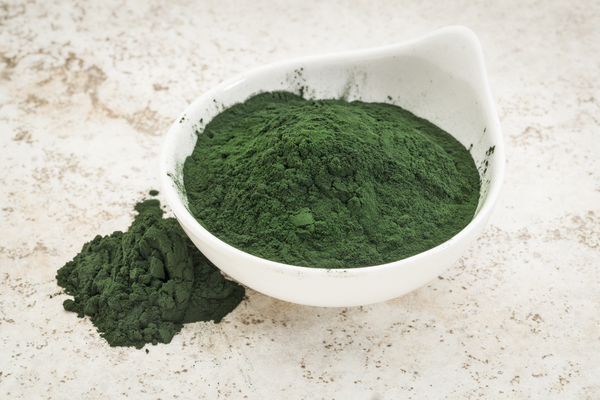brown seaweed

What is brown seaweed?
Brown seaweed is a type of macroalgae that is visible to the naked eye. They come in various forms, for example as kelp or wakame. Brown seaweed contains many important nutrients such as iodine, calcium, iron, magnesium, zinc and vitamins. It is also rich in antioxidants and fiber.
What are the benefits of brown seaweed for dogs?
Brown seaweed can help your dog in various ways:
- It supports thyroid function by providing iodine. A healthy thyroid gland regulates your dog's metabolism and immune system.
- It promotes oral hygiene and prevents plaque and bad breath. The algae act like a natural toothbrush and remove plaque from the teeth.
- They improve digestion and intestinal flora through dietary fiber. They help to eliminate toxins and promote the growth of good bacteria.
- It strengthens the immune system and protects against inflammation through antioxidants. These fight free radicals in the body that can cause cell damage.
What are the disadvantages of brown algae for dogs?
Brown algae is not suitable for every dog. There are some risks and side effects:
- Brown algae can contain too much iodine. An overdose of iodine can lead to thyroid problems such as overactive thyroid (hyperthyroidism) or underactive thyroid (hypothyroidism). This can affect your dog's weight, coat, behavior and health.
- Brown algae can contain heavy metals and other harmful substances. As brown algae grow in the sea, they can be contaminated with mercury or other chemicals. This can lead to poisoning or chronic illness.
- It can trigger allergies or intolerances. Some dogs are sensitive to algae or certain ingredients. This can lead to skin rashes, itching, diarrhea or vomiting.
How do I feed brown seaweed correctly?
If you want to feed your dog brown seaweed, there are a few things you should bear in mind:
- Choose a high quality product from a trustworthy source. Make sure the brown seaweed is organically grown or wild-collected and contains no additives or preservatives.
- Start with a small amount and increase it slowly. This way you can observe how your dog reacts to the brown seaweed and whether it tolerates it.
- Stick to the recommended dosage. The right amount depends on your dog's weight. No more than 5 mg iodine per kilogram of body weight per day.
If you notice any signs of hypersensitivity or poisoning in your dog, you should see your vet immediately. We are not a substitute for a vet, but we try to be as accurate as possible. Every dog reacts differently and we recommend you get a second opinion or consult your vet if in doubt.
Stay healthy and take good care of your four-legged friend!😊
Similar to brown seaweed
Spirulina is a blue-green algae that is one of the oldest living organisms on earth. It is found in salty lakes and waters and can feed itself through photosynthesis. Spirulina has a spiral...
Chlorella is a freshwater microalgae that is one of the oldest living organisms on earth. It has a high content of chlorophyll, the green pigment in plants that is responsible for photosynthesis....
Nori is a seaweed that grows in shallow waters. It is harvested, washed, pressed into thin sheets and dried. Nori has a dark green color and a mild taste. It is rich in protein, fiber, minerals and...
Wakame (Undaria pinnatifida) is a marine brown algae species that was originally native to the coasts of East Asia. However, due to its invasive nature, it has now spread to many other seas. Wakame...



